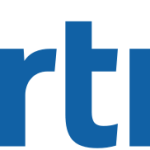- Industry: Consulting
- Number of terms: 1807
- Number of blossaries: 2
- Company Profile:
Gartner delivers technology research to global technology business leaders to make informed decisions on key initiatives.
A process for making software acquisition and disposal decisions. It includes strategies that identify and eliminate unused or infrequently used software, consolidating software licenses or moving toward new licensing models.
Industry:Technology
Gartner defines software as a service (SaaS) as software that is owned, delivered and managed remotely by one or more providers. The provider delivers software based on one set of common code and data definitions that is consumed in a one-to-many model by all contracted customers at anytime on a pay-for-use basis or as a subscription based on use metrics.
Free Gartner Research: Information 2020 – Beyond Big Data SummaryArticle NameSaaS - SaaS ModelGartner, Inc.Gartner, Inc.DescriptionGartner defines software as a service (SaaS) as software that is owned, delivered and managed remotely by one or more providers.
Industry:Technology
To provide services without a physical switch, a softswitch is connected to a server (a Sun Microsystems or Unix machine, for instance) that runs the application. A softswitch is also connected to a media gateway, which is the element that physically connects to the PSTN, IP network or ATM network.
A softswitch is also known as a call agent, a call server or an MGC. It is a device that provides the traditional call control functions or switching matrix of a Class 4 and Class 5 switch. In a mobile network, a softswitch is also called a mobile switching center (MSC). At minimum, a softswitch provides:
• Intelligence that controls connection services for a media gateway or native IP endpoint.
• The ability to select processes that can be applied to a call.
• Routing for a call in the network, based on signaling and customer database information.
• The ability to transfer control of a call to another network element.
• Interfaces to, and support for, management functions, such as provisioning fault-tolerant billing.
• Support for multiple protocols, including some subsets of MGCP, Media Gateway Control Protocol (Megaco), SIP, SS7, call processing language, H.323 and Q.931/Q.2931.
• DiffServ, Resource Reservation Protocol, Real-Time Transport Protocol, Real-Time Control Protocol, MPLS and Institute of Electrical and Electronics Engineers (IEEE) 802.11p.
• Compliance/interoperation with some subsets of standards from the International Telecommunication Union (ITU), Internet Engineering Task Force (IETF), Frame Relay Forum, ATM Forum, IEEE’s IMS Forum and 3GPP/3GPP2.
Industry:Technology
Softswitch architecture comprises softswitches/MGCs, VoIP gateways and application servers. These are among the terms used to identify the major network elements of softswitch architecture. For our purposes, the terms “softswitch” and “softswitch architecture” refer to the softswitch/VoIP gateway/application server approach to distributed switching technology.
Softswitches for cable networks are essentially the same as those used by traditional telephone companies, but they must comply with the NG standards from Cable Television Laboratories (CableLabs) for packetized voice-over-cable networks.
Softswitch architectures are mostly being deployed in traditional operators’ core networks for wireline or mobile trunking, and in the networks of long-distance service providers. Many voice-over-broadband networks are based on Class 5 architecture to provision Class 5 services, as well as calling card services using VoIP technology. In mobile networks, deployment of mobile softswitches in the radio access network (RAN) is limited by the slow deployment of third-generation (3G) infrastructure and the highly optimized TDM architecture in the RAN.
With the migration to SIP, softswitch architecture lends itself to the 3GPP and ETSI TISPAN standards to develop IMS-compliant applications.
Industry:Technology
The Berkeley interprocess communications model. A socket specifies the end points of a two-way communications channel which connects two processes together so they can exchange information.
Industry:Technology
SWIFT (Society for Worldwide Interbank Financial Telecommunication) is a self-describing messaging format that is used within the banking and finance industry to support electronic funds transfer. SWIFT is also the name of the format’s creator, an organization that provides messaging and transaction-processing services to member banks and other financial organizations, including brokers, securities depositories, clearing organizations and stock exchanges.
Industry:Technology
Socialcasting provides lightweight, portable tools for the creation of scheduled and ad hoc live broadcasts. This space has evolved from consumer webcam videocasts to a clear bifurcation between a growing number of professional news organizations and consumer webcasts in social media.
Industry:Technology
The universe of opportunities available for people (the general public) to actively participate in open group activities on the Web. The social Web is generally considered the human social aspect of Web 2.0.
Industry:Technology
Any technology that facilitates social interactions and is enabled by a communications capability, such as the Internet or a mobile device. Examples are social software (e.g., wikis, blogs, social networks) and communication capabilities (e.g., Web conferencing) that are targeted at and enable social interactions.
Industry:Technology
Social tagging also known as “folksonomies”, are user-defined metadata collections. Users do not deliberately create folksonomies and there is rarely a prescribed purpose, but a folksonomy evolves when many users create or store content at particular sites and identify what they think the content is about. “Tag clouds” pinpoint various identifiers and the frequency of use on a folksonomy site. This type of grass-roots community classification (similar to other social networking approaches, such as blogs and wikis) is subject to vandalism and manipulation; nevertheless, it is a fine example of collective intelligence.Do not confuse folksonomies with taxonomies. Folksonomies structure content via user tags; taxonomies are classifications defined by more formal methods that do not necessarily include user-generated tags and rarely are viewed as similar.
Industry:Technology
